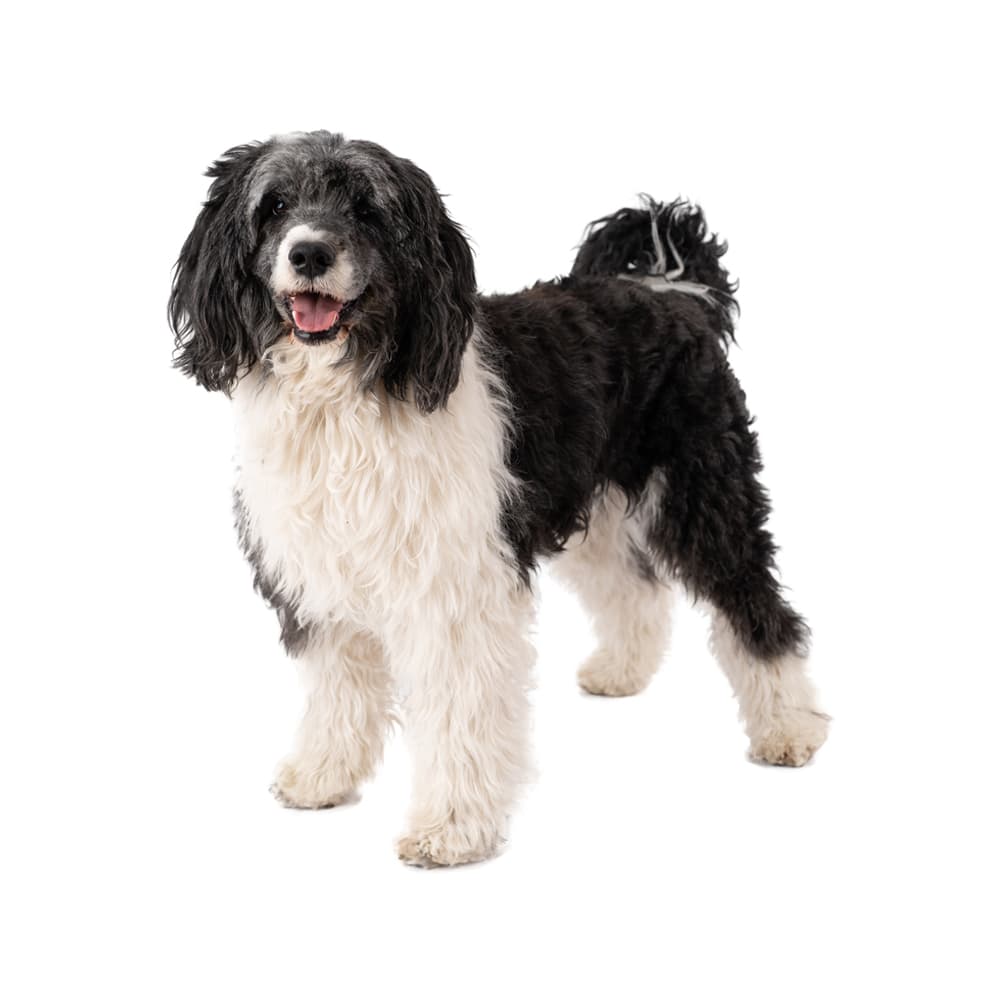Discover your dog's connection to this breed and 200+ others


Discover your dog's connection to this breed and 200+ others



The Portuguese Water Dog, or Cão de Água Português in Portuguese, is a working breed that was bred for a life along the coast of Portugal. The breed has a rich history dating back to over 700 years. It was initially developed to work with fishermen along the coast of Portugal, herding fish into nets, retrieving lost tackle, and carrying messages between ships or to the shore. Their exceptional swimming abilities and strength made them valuable assets to Portuguese fishermen. By the mid-20th century, the breed was nearing extinction due to the modernization of fishing practices. However, a wealthy Portuguese businessman named Vasco Bensaude had a strong interest in the breed and is credited with its survival. He bred Portuguese Water Dogs and sought to standardize their appearance, laying the foundation for the modern breed.
Portuguese Water Dogs can suffer from juvenile cardiomyopathy, GM1 (gangliosidosis) storage disease, distichiasis, Addison's Disease, hip dysplasia, chondrodystrophy (with or without chondrodysplasia), alopecia, and progressive retinal atrophy. They may also suffer from seizures and irritable bowel syndrome.
Portuguese Water Dogs are known for their intelligence, energy, and affinity for water. They are highly trainable and do well in various dog sports like obedience, agility, and water trials. They are also great companions, being affectionate with their families and generally good with children and other pets.
Their high energy levels and intelligence mean they need plenty of mental and physical stimulation to prevent them from becoming bored and potentially destructive. They are not a breed for sedentary owners; they need plenty of exercises and enjoy being active participants in their human families' lives.
A canine genetic lineage is a group of individuals or entire breeds that descended from common ancestors predating modern breed formation. Often these lineages are associated with a ‘type’ of dog with a unique historical working role and associated behaviors (e.g., herding, scent hunting, etc.).
The Pointer-Spaniel lineage encompasses both pointer and spaniel breeds. They were both bred for their specialized hunting abilities in Europe. Pointers locate game and freeze in a stance, called “pointing”, to indicate to their hunter that birds are close by. Spaniels were bred to find game in underbrush and retrieve it. Both pointer and spaniel breeds were bred to enhance their strong senses, trainability, and endurance as these are advantageous in a hunting partner. Spaniels and pointers are known for their strong work ethic, ability to work closely with humans and agility. These dogs’ ability to work closely with their hunters makes them an asset during a hunt because they follow direction well and know how their hunters want them to proceed.
Example breeds with ancestry from this lineage include English Cocker Spaniel, Irish Red Setter, and German Shorthaired Pointer.
Portuguese Water Dogs have webbed feet, which aid in their powerful swimming.
They have a unique non-shedding coat, which makes them popular among people with allergies.
One of the most famous Portuguese Water Dogs is Bo, who was the First Dog of the United States during Barack Obama's presidency.
https://www.akc.org/dog-breeds/portuguese-water-dog/ https://www.petmd.com/dog/breeds/c_dg_portuguese_water_dog https://www.pawprintgenetics.com/products/breeds/192/ https://www.ukcdogs.com/portuguese-water-dog https://www.fci.be/en/nomenclature/PORTUGUESE-WATER-DOG-37.html
Recommended by top vets with decades of experience
21 breeds
64 genetic health markers
50 genetic trait markers
